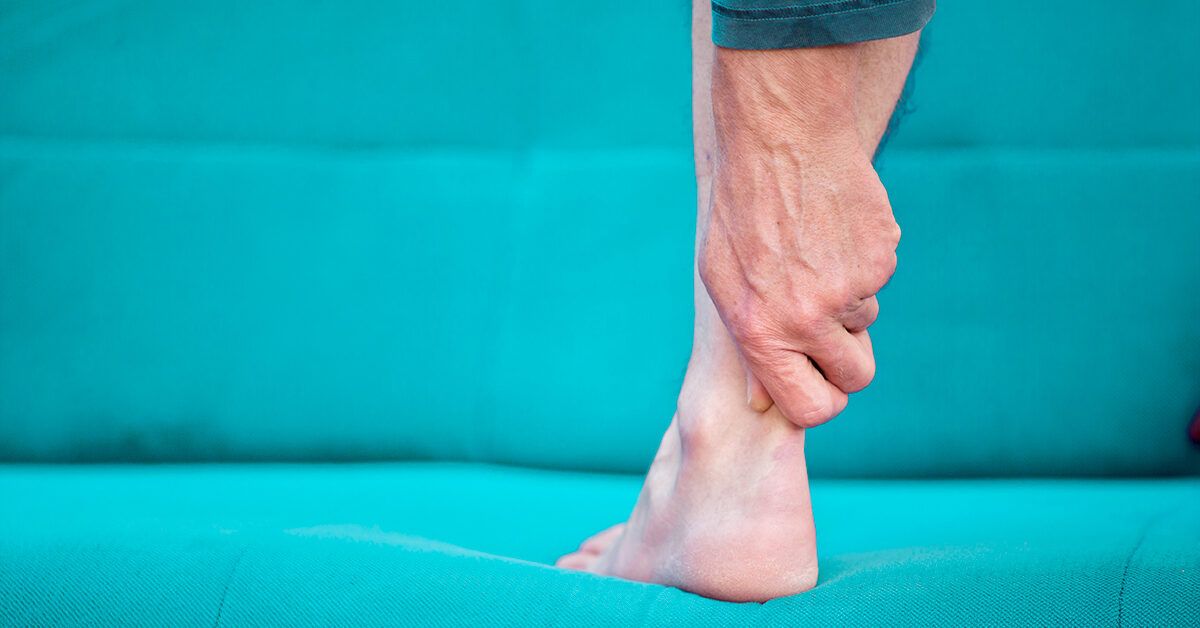"Swift Recovery Roadmap: Achilles Tendon Rupture Symptoms, Treatment, and Diet Tips"
Achilles Tendon Rupture: Symptoms to Look For
Introduction
The Achilles tendon is a crucial structure in the human body that plays a vital role in our daily activities. It allows us to walk, run, jump, and stand on our toes by facilitating plantar flexion. However, this powerful tendon is also susceptible to injury, and when it ruptures, it can be a painful and debilitating experience. In this article, we will explore the symptoms of an Achilles tendon rupture, the importance of early diagnosis, and the treatment options available.

Understanding the Achilles Tendon
Before delving into the symptoms of a ruptured Achilles tendon, it's essential to have a basic understanding of what the Achilles tendon is and its role in the body. The Achilles tendon is a long, thick band of connective tissue that connects the calf muscles, including the gastrocnemius and soleus, to the heel bone. As the longest and strongest tendon in the body, it endures significant stress during everyday activities and sports, making it a critical component for movement.
Symptoms of an Achilles Tendon Rupture
An Achilles tendon rupture typically occurs when the tendon is stretched beyond its breaking point, often due to sudden and forceful calf contractions or activities like basketball and tennis. The most distinctive symptom is the sensation of a loud "pop" accompanied by sharp pain. However, the symptoms may vary in intensity and presentation depending on the severity and nature of the injury. Common symptoms include:
-
Sudden Sharp Pain: The injury is often characterized by a sudden, severe pain in the back of the calf muscle, which may gradually turn into a persistent ache.
-
Kicked Sensation: Many individuals describe the feeling as if someone has kicked them in the back of the leg.
-
Swelling: The back of the calf and/or the heel may become swollen, often due to the bleeding that occurs when the tendon ruptures.
-
Bruising and Discoloration: Bruising or discoloration in the back of the calf and/or heel can occur due to the internal bleeding associated with the injury.
-
Difficulty Walking: Walking up stairs, walking on a slope, or simply walking in general becomes challenging, and a noticeable limp may develop.
-
Difficulty Standing on Toes: The ability to stand on your toes or push off the injured foot is compromised.
-
Tenderness: The back of the lower leg becomes tender to the touch, and there may be a palpable gap where the tendon has ruptured.
Partial Ruptures
In some cases, a partial rupture of the Achilles tendon may occur. This means that the tendon has not completely separated from the heel or has not torn apart entirely. In such cases, individuals may experience some pain or discomfort, but they may not have as much difficulty with movement. Partial ruptures can sometimes be mistaken for Achilles tendinopathy or tendinitis, conditions involving inflammation and microtears on the Achilles tendon. It is crucial to consult a healthcare professional for a proper diagnosis in such cases.
Diagnosis and Medical Attention
If you suspect an Achilles tendon rupture, seeking medical attention is essential. Treatment is often required for proper healing, as an untreated rupture may lead to improper healing and an increased risk of reinjury.
Diagnosing a ruptured Achilles tendon typically involves:
-
Initial Assessment: A healthcare professional will perform an initial assessment, which includes a physical examination and a discussion of the circumstances surrounding the injury.
-
Physical Examination: The healthcare provider will assess the ankle and calf muscles, evaluating their range of motion and response to pressure. They will also palpate the Achilles tendon to check for a rupture or a distinct "tendon gap."
-
Thompson Test: This test involves squeezing the calf muscle to see if the foot points downward. Failure of the foot to point downward indicates an Achilles tendon rupture.
-
Imaging: In some cases, an MRI or ultrasound may be ordered to determine the severity of the injury and assist in planning treatment.
Frequently Asked Questions
-
How is a ruptured Achilles tendon treated? Treatment options typically include immobilization with a cast, physical therapy, and, in some cases, surgery.
-
How long does a ruptured Achilles tendon take to heal? Recovery time varies, but most people can begin to resume their usual activities within 4 to 6 months. A full recovery may take up to a year.
-
Can you walk on a ruptured Achilles tendon? Yes, you can still walk with a ruptured Achilles tendon, but it may be painful, especially when walking up stairs.
-
Can a ruptured Achilles tendon heal itself? For a severe and complete rupture, surgery is often necessary. Without treatment, the risk of reinjury increases, and proper healing is unlikely.
Treatment Options
The treatment for an Achilles tendon rupture varies depending on the severity of the injury. Common treatment options include:
-
Non-Surgical Treatment: For some partial ruptures or less severe cases, non-surgical treatment may be recommended. This often involves immobilization with a cast or walking boot, physical therapy, and a gradual return to weight-bearing activities.
-
Surgery: In cases of complete ruptures or when conservative treatments are not effective, surgical repair may be necessary. Surgery typically involves suturing the torn ends of the tendon back together.
Dietary Guidelines for Fast Recovery
In addition to appropriate medical care, maintaining a balanced diet can play a crucial role in promoting a speedy and successful recovery from an Achilles tendon rupture. Here are dietary guidelines to consider:
-
Protein: Protein is essential for tissue repair and muscle recovery. Include lean sources of protein such as chicken, turkey, fish, lean beef, eggs, dairy products, and plant-based options like tofu and legumes in your diet.
-
Anti-Inflammatory Foods: Inflammation is a natural response to injury, but chronic inflammation can delay healing. Incorporate foods rich in anti-inflammatory compounds like omega-3 fatty acids (found in fatty fish, flaxseeds, and walnuts), fruits, vegetables, and whole grains.
-
Vitamins and Minerals: Ensure you are getting an adequate intake of vitamins and minerals that support healing, including vitamin C (found in citrus fruits and broccoli), vitamin D (sunlight and supplements), calcium (dairy products, leafy greens), and zinc (lean meats, nuts, and seeds).
-
Hydration: Staying well-hydrated is essential for tissue repair and overall health. Drink plenty of water throughout the day.
-
Collagen-Rich Foods: Collagen is a protein that supports tissue repair. Incorporate collagen-rich foods like bone broth, fish, and chicken skin into your diet.
-
Supplements: Consult with a healthcare professional about whether dietary supplements such as glucosamine, chondroitin, and collagen supplements are appropriate for your recovery.
-
Caloric Intake: Adequate caloric intake is essential to provide the energy needed for the healing process. Consult with a healthcare provider or dietitian to determine your specific caloric needs during recovery.
-
Avoid Processed Foods: Limit processed foods high in added sugars, unhealthy fats, and sodium, as they can contribute to inflammation and hinder the healing process.
-
Fiber: A diet rich in fiber from whole grains, fruits, and vegetables can support overall health and digestion during the recovery period.
Conclusion
A ruptured Achilles tendon is a painful injury that can significantly impact your mobility and quality of life. Recognizing the symptoms, seeking medical attention, and following the appropriate treatment plan are essential steps in ensuring a full recovery. Early intervention can help prevent long-term complications and allow you to regain your strength and mobility. If you suspect an Achilles tendon rupture, do not hesitate to consult a healthcare professional to receive the proper care and guidance needed for a successful recovery.
Disclaimer: This article is for informational purposes only and does not constitute medical advice. Consult a healthcare professional for personalized guidance and treatment if you suspect an Achilles tendon injury or require medical assistance.





